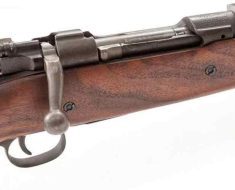Unlock the secrets to flawless trigger performance on your revolver.
Polishing and Smoothing Trigger Components
Trigger jobs are a popular modification for revolver enthusiasts looking to improve the feel and performance of their firearms. A smooth and light trigger pull can make a significant difference in accuracy and overall shooting experience. One of the key components of a successful trigger job is polishing and smoothing the trigger components. In this article, we will explore the secrets to achieving a silky smooth trigger on your revolver.
The first step in polishing and smoothing trigger components is to disassemble the revolver and remove the trigger assembly. This will allow you to access the individual components that make up the trigger mechanism. It is important to work in a clean and well-lit area to prevent losing any small parts during the disassembly process.
Once you have removed the trigger assembly, the next step is to inspect each component for any signs of wear or rough spots. These areas can cause friction and hinder the smooth operation of the trigger. Use a fine-grit sandpaper or polishing compound to gently remove any imperfections on the trigger components. Be sure to work slowly and carefully to avoid removing too much material and compromising the integrity of the parts.
After polishing the trigger components, it is important to lubricate them with a high-quality gun oil or grease. This will help reduce friction and ensure smooth operation of the trigger mechanism. Apply a small amount of lubricant to each component and reassemble the trigger assembly according to the manufacturer’s instructions.
Once the trigger assembly is reassembled, it is time to test the trigger pull. Dry fire the revolver several times to ensure that the trigger moves smoothly and consistently. If you notice any rough spots or inconsistencies in the trigger pull, disassemble the revolver again and repeat the polishing and lubrication process until the trigger operates smoothly.
In addition to polishing and smoothing the trigger components, there are a few other tips and tricks that can help improve the feel of the trigger on your revolver. One common technique is to install a reduced power trigger return spring. This can help lighten the trigger pull and make it easier to shoot accurately.
Another option is to install a trigger stop screw, which can help eliminate overtravel and provide a more consistent trigger pull. This can be especially useful for competition shooters who require precise control over their trigger.
Overall, achieving a silky smooth trigger on your revolver requires patience, attention to detail, and a willingness to experiment with different techniques. By polishing and smoothing the trigger components, lubricating them properly, and making any necessary adjustments, you can significantly improve the feel and performance of your revolver. So, grab your tools and get to work – your trigger finger will thank you!
Upgrading Trigger Springs
Trigger jobs are a popular modification for revolver enthusiasts looking to improve the performance of their firearms. One key aspect of a successful trigger job is upgrading the trigger springs. Upgrading trigger springs can help reduce trigger pull weight, improve trigger feel, and enhance overall shooting experience. In this article, we will explore the secrets to achieving silky smooth trigger jobs on revolvers through upgrading trigger springs.
When it comes to upgrading trigger springs, there are a few key factors to consider. The first step is to determine the desired trigger pull weight. This will depend on personal preference and the intended use of the revolver. A lighter trigger pull weight is often preferred for target shooting, while a slightly heavier trigger pull weight may be more suitable for self-defense or hunting applications.
Once the desired trigger pull weight has been established, it is important to select the appropriate trigger springs. There are a variety of aftermarket trigger springs available on the market, ranging from reduced power springs to competition-grade springs. It is essential to choose springs that are compatible with the specific make and model of the revolver to ensure proper fit and function.
Installing trigger springs can be a delicate process that requires attention to detail and precision. It is recommended to seek the assistance of a qualified gunsmith or experienced revolver enthusiast to ensure proper installation and function. Improper installation of trigger springs can result in malfunctions or damage to the revolver.
Aftermarket trigger springs can help reduce trigger pull weight by providing a smoother and more consistent trigger pull. This can lead to improved accuracy and faster follow-up shots. In addition to reducing trigger pull weight, upgrading trigger springs can also improve trigger feel by reducing creep and overtravel.
One of the secrets to achieving silky smooth trigger jobs on revolvers is to polish the contact surfaces of the trigger and hammer. This can help reduce friction and improve the overall feel of the trigger. Polishing the contact surfaces can be done using a fine abrasive compound and a polishing cloth. It is important to take care not to remove too much material, as this can affect the function of the trigger and hammer.
Another secret to achieving silky smooth trigger jobs on revolvers is to properly lubricate the trigger components. Using a high-quality gun oil or grease can help reduce friction and ensure smooth operation of the trigger. It is important to regularly clean and lubricate the trigger components to maintain optimal performance.
In conclusion, upgrading trigger springs is a key component of achieving silky smooth trigger jobs on revolvers. By selecting the appropriate trigger springs, installing them correctly, and polishing and lubricating the trigger components, revolver enthusiasts can enjoy improved trigger feel, reduced trigger pull weight, and enhanced shooting experience. Remember to always prioritize safety and consult with a qualified gunsmith before making any modifications to your revolver. With the right tools and techniques, you can unlock the secrets to silky smooth trigger jobs on revolvers.
Adjusting Trigger Pull Weight
Trigger jobs are a popular modification for revolver enthusiasts looking to improve the performance of their firearms. One of the key aspects of a successful trigger job is adjusting the trigger pull weight. This can greatly affect the feel and performance of the trigger, making it smoother and more consistent. In this article, we will explore the secrets to achieving a silky smooth trigger pull on revolvers.
When it comes to adjusting trigger pull weight, there are a few key factors to consider. The first step is to determine the desired pull weight for your revolver. This will depend on personal preference and the intended use of the firearm. A lighter trigger pull weight is often preferred for target shooting, while a slightly heavier pull weight may be more suitable for self-defense or hunting applications.
Once you have determined the desired pull weight, the next step is to disassemble the revolver and access the trigger mechanism. This will vary depending on the make and model of your revolver, so be sure to consult the manufacturer’s instructions or seek guidance from a qualified gunsmith if you are unsure.
One of the most common methods for adjusting trigger pull weight is to replace the factory trigger return spring with a lighter or heavier spring. This can be a relatively simple and cost-effective way to achieve the desired pull weight. However, it is important to note that changing the trigger return spring can also affect other aspects of the trigger mechanism, so it is important to proceed with caution and test the trigger thoroughly before using the firearm.
Another method for adjusting trigger pull weight is to polish and smooth out the contact surfaces of the trigger and hammer. This can help reduce friction and improve the overall feel of the trigger. Using a fine grit sandpaper or polishing compound, carefully remove any rough spots or burrs on the trigger and hammer surfaces. Be sure to take your time and work slowly to avoid removing too much material, which can affect the reliability and safety of the firearm.
In addition to polishing the trigger and hammer surfaces, you may also want to consider upgrading to a high-quality aftermarket trigger kit. These kits often include precision-machined components that are designed to improve the feel and performance of the trigger. While these kits can be more expensive than simply replacing the trigger return spring, they can offer a more refined and consistent trigger pull.
Once you have made the necessary adjustments to the trigger mechanism, it is important to test the trigger thoroughly to ensure that it is functioning properly. Check for any signs of wear or damage, and make any necessary adjustments to achieve the desired pull weight. It is also a good idea to test the trigger under different conditions, such as with different types of ammunition or in various shooting positions, to ensure that it is reliable and consistent.
In conclusion, adjusting trigger pull weight is a key aspect of achieving a silky smooth trigger pull on revolvers. By carefully considering the desired pull weight, making the necessary adjustments to the trigger mechanism, and testing the trigger thoroughly, you can improve the performance and feel of your revolver. Whether you are a competitive shooter, a hunter, or a recreational shooter, a smooth and consistent trigger pull can greatly enhance your shooting experience. So take the time to fine-tune your revolver’s trigger, and enjoy the benefits of a silky smooth trigger job.
Installing Trigger Overtravel Stops
Trigger jobs are a popular modification for revolver enthusiasts looking to improve the performance of their firearms. One key aspect of a successful trigger job is installing trigger overtravel stops. These stops can help reduce the amount of movement the trigger has after the hammer falls, resulting in a crisper and more consistent trigger pull. In this article, we will explore the secrets to achieving silky smooth trigger jobs on revolvers by focusing on the installation of trigger overtravel stops.
Before diving into the installation process, it is important to understand the purpose of trigger overtravel stops. When a revolver is fired, the trigger continues to move backward even after the hammer has fallen. This excess movement, known as overtravel, can negatively impact the shooter’s accuracy and control. By installing trigger overtravel stops, you can limit the amount of overtravel, resulting in a more precise and predictable trigger pull.
To begin the installation process, you will need to disassemble your revolver and access the trigger mechanism. Carefully examine the trigger and hammer to identify where the overtravel occurs. This will help you determine the optimal placement for the overtravel stops. Once you have identified the appropriate location, you can begin the installation process.
One common method for installing trigger overtravel stops is to use set screws. These screws can be adjusted to limit the amount of overtravel by coming into contact with the trigger or hammer. To install set screws, drill and tap holes in the trigger or hammer where the stops will be placed. Be sure to use the appropriate size drill bit and tap to ensure a secure fit.
After drilling and tapping the holes, insert the set screws and adjust them to the desired length. It is important to test the trigger pull after each adjustment to ensure that the stops are properly limiting the overtravel. Make small adjustments as needed until you achieve a smooth and consistent trigger pull.
Another method for installing trigger overtravel stops is to use shims. Shims can be placed between the trigger and frame to limit the amount of overtravel. To install shims, carefully measure the space between the trigger and frame and select shims of the appropriate thickness. Place the shims in the desired location and test the trigger pull to ensure that the overtravel is limited.
Regardless of the method you choose, it is important to take your time and carefully follow the installation instructions. Properly installed trigger overtravel stops can greatly improve the performance of your revolver and enhance your shooting experience. Remember to test the trigger pull after each adjustment to ensure that the stops are functioning correctly.
In conclusion, installing trigger overtravel stops is a key component of achieving silky smooth trigger jobs on revolvers. By limiting the amount of overtravel, you can improve the consistency and precision of your trigger pull. Whether you choose to use set screws or shims, taking the time to properly install trigger overtravel stops will pay off in improved performance and accuracy. So, grab your tools and get to work – your revolver will thank you for it!
Proper Lubrication and Maintenance Techniques
Trigger jobs on revolvers can greatly improve the overall performance and feel of your firearm. A smooth trigger pull can make a significant difference in accuracy and shooting comfort. However, achieving that silky smooth trigger can be a bit of a challenge if you don’t know the proper techniques for lubrication and maintenance. In this article, we will explore some of the secrets to achieving a flawless trigger job on your revolver.
Proper lubrication is key to ensuring that your revolver’s trigger functions smoothly and consistently. Without adequate lubrication, the trigger can feel gritty and rough, leading to a less than optimal shooting experience. To start, it’s important to use a high-quality gun oil or grease specifically designed for firearms. Avoid using household oils or lubricants, as they may not provide the necessary protection and can actually cause damage to your revolver over time.
Before applying any lubricant, make sure to thoroughly clean the trigger mechanism and all moving parts. Use a solvent or degreaser to remove any dirt, debris, or old lubricant that may be causing friction. Once the trigger mechanism is clean, apply a small amount of lubricant to the contact points where metal rubs against metal. Be careful not to over-lubricate, as this can attract dirt and grime, leading to potential malfunctions.
When applying lubricant, pay special attention to the sear and hammer engagement surfaces. These are the areas where the trigger pull is most affected, so ensuring they are properly lubricated is crucial. A light coating of grease or oil on these surfaces will help reduce friction and create a smoother trigger pull.
In addition to proper lubrication, regular maintenance is essential for keeping your revolver’s trigger in top condition. Make it a habit to clean and lubricate your revolver after each shooting session, especially if you have been shooting in dusty or dirty conditions. Regular maintenance will help prevent buildup of dirt and debris, which can cause the trigger to feel gritty and rough.
Another important aspect of trigger job maintenance is periodic inspection and adjustment of the trigger pull weight. Over time, the trigger spring may weaken or wear out, leading to a heavier trigger pull. If you notice that your trigger pull has become heavier or less consistent, it may be time to replace the trigger spring or make adjustments to the trigger mechanism.
When making adjustments to the trigger mechanism, it’s important to proceed with caution and follow the manufacturer’s guidelines. Improper adjustments can lead to malfunctions or even accidental discharges, so it’s best to consult a qualified gunsmith if you are unsure of what to do.
By following these tips for proper lubrication and maintenance, you can ensure that your revolver’s trigger remains smooth and consistent for years to come. A well-maintained trigger not only improves accuracy and shooting comfort but also enhances the overall shooting experience. So take the time to care for your revolver’s trigger, and you’ll be rewarded with a firearm that performs flawlessly every time you pull the trigger.





